ADT 2011 Annual Report Download - page 61
Download and view the complete annual report
Please find page 61 of the 2011 ADT annual report below. You can navigate through the pages in the report by either clicking on the pages listed below, or by using the keyword search tool below to find specific information within the annual report.-
 1
1 -
 2
2 -
 3
3 -
 4
4 -
 5
5 -
 6
6 -
 7
7 -
 8
8 -
 9
9 -
 10
10 -
 11
11 -
 12
12 -
 13
13 -
 14
14 -
 15
15 -
 16
16 -
 17
17 -
 18
18 -
 19
19 -
 20
20 -
 21
21 -
 22
22 -
 23
23 -
 24
24 -
 25
25 -
 26
26 -
 27
27 -
 28
28 -
 29
29 -
 30
30 -
 31
31 -
 32
32 -
 33
33 -
 34
34 -
 35
35 -
 36
36 -
 37
37 -
 38
38 -
 39
39 -
 40
40 -
 41
41 -
 42
42 -
 43
43 -
 44
44 -
 45
45 -
 46
46 -
 47
47 -
 48
48 -
 49
49 -
 50
50 -
 51
51 -
 52
52 -
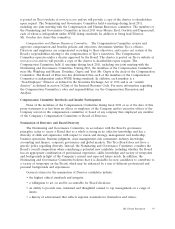 53
53 -
 54
54 -
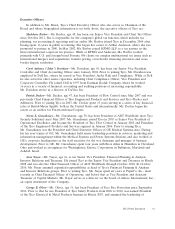 55
55 -
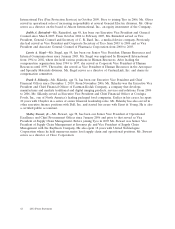 56
56 -
 57
57 -
 58
58 -
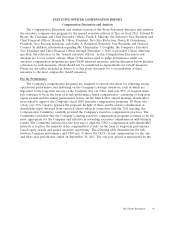 59
59 -
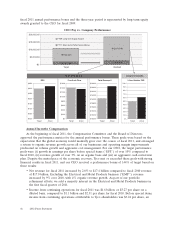 60
60 -
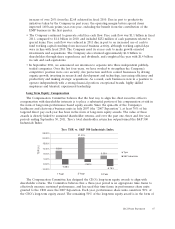 61
61 -
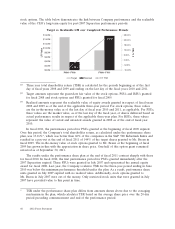 62
62 -
 63
63 -
 64
64 -
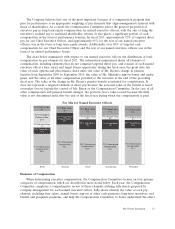 65
65 -
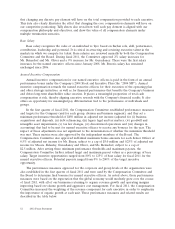 66
66 -
 67
67 -
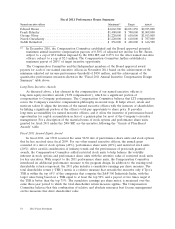 68
68 -
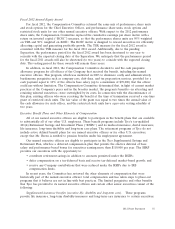 69
69 -
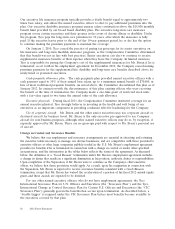 70
70 -
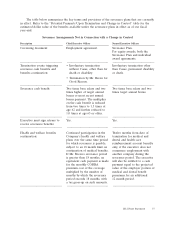 71
71 -
 72
72 -
 73
73 -
 74
74 -
 75
75 -
 76
76 -
 77
77 -
 78
78 -
 79
79 -
 80
80 -
 81
81 -
 82
82 -
 83
83 -
 84
84 -
 85
85 -
 86
86 -
 87
87 -
 88
88 -
 89
89 -
 90
90 -
 91
91 -
 92
92 -
 93
93 -
 94
94 -
 95
95 -
 96
96 -
 97
97 -
 98
98 -
 99
99 -
 100
100 -
 101
101 -
 102
102 -
 103
103 -
 104
104 -
 105
105 -
 106
106 -
 107
107 -
 108
108 -
 109
109 -
 110
110 -
 111
111 -
 112
112 -
 113
113 -
 114
114 -
 115
115 -
 116
116 -
 117
117 -
 118
118 -
 119
119 -
 120
120 -
 121
121 -
 122
122 -
 123
123 -
 124
124 -
 125
125 -
 126
126 -
 127
127 -
 128
128 -
 129
129 -
 130
130 -
 131
131 -
 132
132 -
 133
133 -
 134
134 -
 135
135 -
 136
136 -
 137
137 -
 138
138 -
 139
139 -
 140
140 -
 141
141 -
 142
142 -
 143
143 -
 144
144 -
 145
145 -
 146
146 -
 147
147 -
 148
148 -
 149
149 -
 150
150 -
 151
151 -
 152
152 -
 153
153 -
 154
154 -
 155
155 -
 156
156 -
 157
157 -
 158
158 -
 159
159 -
 160
160 -
 161
161 -
 162
162 -
 163
163 -
 164
164 -
 165
165 -
 166
166 -
 167
167 -
 168
168 -
 169
169 -
 170
170 -
 171
171 -
 172
172 -
 173
173 -
 174
174 -
 175
175 -
 176
176 -
 177
177 -
 178
178 -
 179
179 -
 180
180 -
 181
181 -
 182
182 -
 183
183 -
 184
184 -
 185
185 -
 186
186 -
 187
187 -
 188
188 -
 189
189 -
 190
190 -
 191
191 -
 192
192 -
 193
193 -
 194
194 -
 195
195 -
 196
196 -
 197
197 -
 198
198 -
 199
199 -
 200
200 -
 201
201 -
 202
202 -
 203
203 -
 204
204 -
 205
205 -
 206
206 -
 207
207 -
 208
208 -
 209
209 -
 210
210 -
 211
211 -
 212
212 -
 213
213 -
 214
214 -
 215
215 -
 216
216 -
 217
217 -
 218
218 -
 219
219 -
 220
220 -
 221
221 -
 222
222 -
 223
223 -
 224
224 -
 225
225 -
 226
226 -
 227
227 -
 228
228 -
 229
229 -
 230
230 -
 231
231 -
 232
232 -
 233
233 -
 234
234 -
 235
235 -
 236
236 -
 237
237 -
 238
238 -
 239
239 -
 240
240 -
 241
241 -
 242
242 -
 243
243 -
 244
244 -
 245
245 -
 246
246 -
 247
247 -
 248
248 -
 249
249 -
 250
250 -
 251
251 -
 252
252 -
 253
253 -
 254
254 -
 255
255 -
 256
256 -
 257
257 -
 258
258 -
 259
259 -
 260
260 -
 261
261 -
 262
262 -
 263
263 -
 264
264 -
 265
265 -
 266
266 -
 267
267 -
 268
268 -
 269
269 -
 270
270 -
 271
271 -
 272
272 -
 273
273 -
 274
274 -
 275
275 -
 276
276 -
 277
277 -
 278
278 -
 279
279 -
 280
280 -
 281
281 -
 282
282 -
 283
283 -
 284
284 -
 285
285 -
 286
286 -
 287
287 -
 288
288 -
 289
289 -
 290
290 -
 291
291 -
 292
292 -
 293
293 -
 294
294 -
 295
295 -
 296
296 -
 297
297 -
 298
298 -
 299
299 -
 300
300 -
 301
301 -
 302
302 -
 303
303 -
 304
304 -
 305
305 -
 306
306 -
 307
307 -
 308
308 -
 309
309 -
 310
310 -
 311
311 -
 312
312 -
 313
313
 |
 |

13DEC201119172497
increase of over 20% from the $2.68 achieved in fiscal 2010. Due in part to productivity
initiatives taken by the Company in past years, the operating margin before special items
improved 160 basis points year-over-year, excluding the benefit from the contribution of the
EMP business in the first quarter.
• The Company continued to generate solid free cash flow. Free cash flow was $1.1 billion in fiscal
2011, compared to $1.4 billion in 2010, and included $252 million of cash payments related to
special items. Free cash flow was reduced in 2011 due in part to an increased use of cash to
fund working capital resulting from increased business activity, although working capital days
were in line with fiscal 2010. The Company used its excess cash to make growth oriented
investments and acquisitions. The Company also returned approximately $1.8 billion to
shareholders through share repurchases and dividends, and completed the year with $1.4 billion
in cash and cash equivalents.
• In September 2011, we announced our intention to separate into three independent publicly-
traded companies. Over the last four years, we have worked to strengthen the Company’s
competitive position in its core security, fire protection and flow control businesses by driving
organic growth, investing in research and development and technology, increasing efficiency and
productivity and making strategic acquisitions. As a result, each business is now in a position to
operate independently with a strong financial position, exceptional brands, highly skilled
employees and talented, experienced leadership.
Long Term Equity Compensation
The Compensation Committee believes that the best way to align the chief executive officer’s
compensation with shareholder interests is to place a substantial portion of his compensation at-risk in
the form of long-term performance based equity awards. Since the spin-offs of the Company’s
healthcare and electronics business units in July 2007 (the ‘‘2007 Separation’’), at least 70% of his
targeted direct pay each year has been in the form of long-term equity awards. The value of these
awards is directly linked to sustained shareholder returns, and over the past one, three and five year
periods ending September 30, 2011, Tyco’s total shareholder return has outperformed the S&P 500
Industrials Index:
Tyco TSR vs. S&P 500 Industrials Index
8.06%
21.03%
3.33%
-5.28%
-2.82%
-6.78%
-10.00%
-5.00%
0.00%
5.00%
10.00%
15.00%
20.00%
25.00%
Tyco
S&P Industrials
1 Year 3 Year 5 Year
TSR (%)
The Compensation Committee has designed the CEO’s long-term equity awards to align with
shareholder returns. The Committee believes that a three-year period is an appropriate time frame to
effectively measure sustained performance, and has used this time-frame in performance share units
granted to the CEO since the 2007 Separation. Each year, performance share units constitute 50% of
the CEO’s long-term equity award. The remaining 50% of the long-term equity award is in the form of
2012 Proxy Statement 47
